MaryAnn Bernal's Blog, page 148
September 21, 2015
Cheers! Archaeologists Discover Ceremonial Cup from the Dynasty of the Black Pharaohs
Ancient Origins
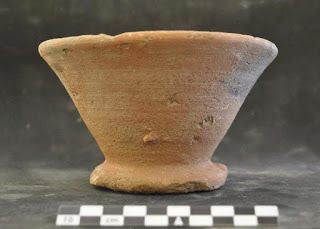 A team of scientists, composed of members of the Tenerife University of La Laguna and in charge of carrying out an archaeological mission in Luxor, have recently discovered a ceremonial cup from the 25th dynasty, also known as Dynasty of the Black Pharaohs.
A team of scientists, composed of members of the Tenerife University of La Laguna and in charge of carrying out an archaeological mission in Luxor, have recently discovered a ceremonial cup from the 25th dynasty, also known as Dynasty of the Black Pharaohs.
Led by Miguel Angel Molinero, Professor of Prehistory, Archaeology, and Ancient History at the university, researchers never suspected that on this fourth campaign on Egyptian soil, they were to rediscover the cup which confirms that the tomb TT209 in Luxor belongs to the 25th (Kushite) dynasty , of Nubian origin .
Luxor is a town built on the ruins of ancient Thebes, capital of the New Kingdom of ancient Egypt. Situated on the east bank of the Nile River is the city of the great temples of ancient Egypt and the famous necropolis of the West Bank, where pharaohs and nobles were buried, now called the Valley of the Kings and the Valley of the Queens.
 Night shot from outside the Temple of Luxor. (
Wikimedia Commons
)The Tomb of NisemroThe excavations in the tomb, which may have belonged to a former senior Egyptian official named Nisemro, were completed from June 12 until July 24.
The newspaper El Mundo
reported that the entrance to the tomb of Nisemro was blocked by rubble from the demolition in 2007 by several illegal construction activities, thus some of the context was also lost. In addition, over the centuries the floods have left large amounts of sediment in the tomb’s interior, with the consequent moisture and the problem that this poses to the conservation of archaeological remains. Nonetheless, the tomb was eventually located by archaeologists in 2012 thanks to the reports written by researchers of the early twentieth century and plans from the 1960s.
Night shot from outside the Temple of Luxor. (
Wikimedia Commons
)The Tomb of NisemroThe excavations in the tomb, which may have belonged to a former senior Egyptian official named Nisemro, were completed from June 12 until July 24.
The newspaper El Mundo
reported that the entrance to the tomb of Nisemro was blocked by rubble from the demolition in 2007 by several illegal construction activities, thus some of the context was also lost. In addition, over the centuries the floods have left large amounts of sediment in the tomb’s interior, with the consequent moisture and the problem that this poses to the conservation of archaeological remains. Nonetheless, the tomb was eventually located by archaeologists in 2012 thanks to the reports written by researchers of the early twentieth century and plans from the 1960s.
Pre-dynastic tomb sheds light on Egyptian life before PharaohsThe Crowns of the PharaohsNew Egypt discovery could change chronology of the Pharaohs and beliefs about Amenhotep III and IVRosetta-style engraving lauding Cleopatra I and two Ptolemaic Pharaohs unearthed in Egypt"The door was open for the new campaign. The reliefs of Nisemro, seem proud of having acted as protectors of the enclosure from the doorposts," said archaeologists to the newspaper 20 Minutes. They also told the newspaper that the tomb was completely covered with sediment.
In that sediment they even found the tracks and traces left on the grave from the Egyptologists who preceded them as well as looters who visited the tomb over the centuries. The archaeologists told 20 Minutes: "First, we would like to identify the stratigraphic evidence left in the passage. However, we do not hope to see much of anything because we recognize its consequences: the gap left by the theft of a relief, for example." They have also reported that among the materials found inside there were several Ptolemaic floral containers which were used to identify the reuse of the tomb for ceremonial use.
 Entrance to the Nisemro tomb in Luxor. (Photo:
eldiario.es/canariasahora
)The ceramic pieces found by the Spanish archaeologists show motifs and stylized lotus leaves of aquatic Nile plants, corresponding to a particular model that developed from the mid-third century to late second century BC. These discoveries led the team to state: "We are confident that the tomb is from the Kushite Dynasty. The owner's title has only one parallel - in a Nubian official from the beginning of the 25th dynasty. We also just found remains of material culture that are attributable to that dynasty."
Entrance to the Nisemro tomb in Luxor. (Photo:
eldiario.es/canariasahora
)The ceramic pieces found by the Spanish archaeologists show motifs and stylized lotus leaves of aquatic Nile plants, corresponding to a particular model that developed from the mid-third century to late second century BC. These discoveries led the team to state: "We are confident that the tomb is from the Kushite Dynasty. The owner's title has only one parallel - in a Nubian official from the beginning of the 25th dynasty. We also just found remains of material culture that are attributable to that dynasty."
In late June archeologists also found physical evidence of a funeral ritual with numerous ceramic containers. They do not believe that they were used in everyday life, but instead correspond to ceremonial activities.
One of the most important artifacts they have found was a cup, since it is the first full object found in the tomb that may be attributed to the 25th dynasty. For the Spanish archaeologists at the site it was “as valuable as the grail.”
 Ruins of the Temple of Amun of Jebel Barkal, the main religious center of the 25th dynasty or Kushite Dynasty. (
Wikimedia Commons
)The time the ceremony took place does not seem to correspond to the time of the burial as the chronology of the ceramics suggests that there is at least 400 years between the construction of the tomb TT 209 and the ceramics from the ceremony. "Each room gives us unexpected images of life and death in the past. Surely we can expect some surprises when we return to work," said the Egyptologists at the end of the current season of excavations.
Ruins of the Temple of Amun of Jebel Barkal, the main religious center of the 25th dynasty or Kushite Dynasty. (
Wikimedia Commons
)The time the ceremony took place does not seem to correspond to the time of the burial as the chronology of the ceramics suggests that there is at least 400 years between the construction of the tomb TT 209 and the ceramics from the ceremony. "Each room gives us unexpected images of life and death in the past. Surely we can expect some surprises when we return to work," said the Egyptologists at the end of the current season of excavations.
A lot of sediment remains in the tomb chambers, but the archaeologists predict that next season may be a "transit route to new discoveries" despite the cleanup they will have to begin their work with.
Featured image: Photograph of the ceremonial cup known as "the holy grail of Luxor." (Photo: EFE / 20 Minutes )
This article was first published in Spanish at https://www.ancient-origins.es/ and has been translated with permission.
By: Mariló TA
 A team of scientists, composed of members of the Tenerife University of La Laguna and in charge of carrying out an archaeological mission in Luxor, have recently discovered a ceremonial cup from the 25th dynasty, also known as Dynasty of the Black Pharaohs.
A team of scientists, composed of members of the Tenerife University of La Laguna and in charge of carrying out an archaeological mission in Luxor, have recently discovered a ceremonial cup from the 25th dynasty, also known as Dynasty of the Black Pharaohs.Led by Miguel Angel Molinero, Professor of Prehistory, Archaeology, and Ancient History at the university, researchers never suspected that on this fourth campaign on Egyptian soil, they were to rediscover the cup which confirms that the tomb TT209 in Luxor belongs to the 25th (Kushite) dynasty , of Nubian origin .
Luxor is a town built on the ruins of ancient Thebes, capital of the New Kingdom of ancient Egypt. Situated on the east bank of the Nile River is the city of the great temples of ancient Egypt and the famous necropolis of the West Bank, where pharaohs and nobles were buried, now called the Valley of the Kings and the Valley of the Queens.
 Night shot from outside the Temple of Luxor. (
Wikimedia Commons
)The Tomb of NisemroThe excavations in the tomb, which may have belonged to a former senior Egyptian official named Nisemro, were completed from June 12 until July 24.
The newspaper El Mundo
reported that the entrance to the tomb of Nisemro was blocked by rubble from the demolition in 2007 by several illegal construction activities, thus some of the context was also lost. In addition, over the centuries the floods have left large amounts of sediment in the tomb’s interior, with the consequent moisture and the problem that this poses to the conservation of archaeological remains. Nonetheless, the tomb was eventually located by archaeologists in 2012 thanks to the reports written by researchers of the early twentieth century and plans from the 1960s.
Night shot from outside the Temple of Luxor. (
Wikimedia Commons
)The Tomb of NisemroThe excavations in the tomb, which may have belonged to a former senior Egyptian official named Nisemro, were completed from June 12 until July 24.
The newspaper El Mundo
reported that the entrance to the tomb of Nisemro was blocked by rubble from the demolition in 2007 by several illegal construction activities, thus some of the context was also lost. In addition, over the centuries the floods have left large amounts of sediment in the tomb’s interior, with the consequent moisture and the problem that this poses to the conservation of archaeological remains. Nonetheless, the tomb was eventually located by archaeologists in 2012 thanks to the reports written by researchers of the early twentieth century and plans from the 1960s.Pre-dynastic tomb sheds light on Egyptian life before PharaohsThe Crowns of the PharaohsNew Egypt discovery could change chronology of the Pharaohs and beliefs about Amenhotep III and IVRosetta-style engraving lauding Cleopatra I and two Ptolemaic Pharaohs unearthed in Egypt"The door was open for the new campaign. The reliefs of Nisemro, seem proud of having acted as protectors of the enclosure from the doorposts," said archaeologists to the newspaper 20 Minutes. They also told the newspaper that the tomb was completely covered with sediment.
In that sediment they even found the tracks and traces left on the grave from the Egyptologists who preceded them as well as looters who visited the tomb over the centuries. The archaeologists told 20 Minutes: "First, we would like to identify the stratigraphic evidence left in the passage. However, we do not hope to see much of anything because we recognize its consequences: the gap left by the theft of a relief, for example." They have also reported that among the materials found inside there were several Ptolemaic floral containers which were used to identify the reuse of the tomb for ceremonial use.
 Entrance to the Nisemro tomb in Luxor. (Photo:
eldiario.es/canariasahora
)The ceramic pieces found by the Spanish archaeologists show motifs and stylized lotus leaves of aquatic Nile plants, corresponding to a particular model that developed from the mid-third century to late second century BC. These discoveries led the team to state: "We are confident that the tomb is from the Kushite Dynasty. The owner's title has only one parallel - in a Nubian official from the beginning of the 25th dynasty. We also just found remains of material culture that are attributable to that dynasty."
Entrance to the Nisemro tomb in Luxor. (Photo:
eldiario.es/canariasahora
)The ceramic pieces found by the Spanish archaeologists show motifs and stylized lotus leaves of aquatic Nile plants, corresponding to a particular model that developed from the mid-third century to late second century BC. These discoveries led the team to state: "We are confident that the tomb is from the Kushite Dynasty. The owner's title has only one parallel - in a Nubian official from the beginning of the 25th dynasty. We also just found remains of material culture that are attributable to that dynasty."In late June archeologists also found physical evidence of a funeral ritual with numerous ceramic containers. They do not believe that they were used in everyday life, but instead correspond to ceremonial activities.
One of the most important artifacts they have found was a cup, since it is the first full object found in the tomb that may be attributed to the 25th dynasty. For the Spanish archaeologists at the site it was “as valuable as the grail.”
 Ruins of the Temple of Amun of Jebel Barkal, the main religious center of the 25th dynasty or Kushite Dynasty. (
Wikimedia Commons
)The time the ceremony took place does not seem to correspond to the time of the burial as the chronology of the ceramics suggests that there is at least 400 years between the construction of the tomb TT 209 and the ceramics from the ceremony. "Each room gives us unexpected images of life and death in the past. Surely we can expect some surprises when we return to work," said the Egyptologists at the end of the current season of excavations.
Ruins of the Temple of Amun of Jebel Barkal, the main religious center of the 25th dynasty or Kushite Dynasty. (
Wikimedia Commons
)The time the ceremony took place does not seem to correspond to the time of the burial as the chronology of the ceramics suggests that there is at least 400 years between the construction of the tomb TT 209 and the ceramics from the ceremony. "Each room gives us unexpected images of life and death in the past. Surely we can expect some surprises when we return to work," said the Egyptologists at the end of the current season of excavations.A lot of sediment remains in the tomb chambers, but the archaeologists predict that next season may be a "transit route to new discoveries" despite the cleanup they will have to begin their work with.
Featured image: Photograph of the ceremonial cup known as "the holy grail of Luxor." (Photo: EFE / 20 Minutes )
This article was first published in Spanish at https://www.ancient-origins.es/ and has been translated with permission.
By: Mariló TA
Published on September 21, 2015 07:44
1,900-Year-Old Roman Village unearthed in Germany
Ancient Origins
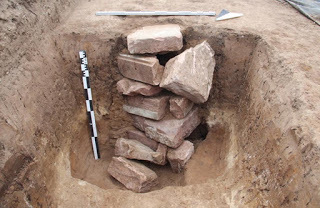 The ancient Romans had an insatiable desire to conquer territory and they ranged far outside Italy to do so. An excavation this summer revealed that one place where the Romans had an outpost was in Gernsheim, Germany, 943 km (546) miles north of Rome. They also discovered that after the Roman soldiers left the military fort, another group of people moved in and built a village on top of it.
The ancient Romans had an insatiable desire to conquer territory and they ranged far outside Italy to do so. An excavation this summer revealed that one place where the Romans had an outpost was in Gernsheim, Germany, 943 km (546) miles north of Rome. They also discovered that after the Roman soldiers left the military fort, another group of people moved in and built a village on top of it.
The Romans apparently made some enemies among the peoples they occupied in Germania Upper and Lower because waves of angry Germanic Goths and Vandals attacked the empire and sacked Rome after the occupiers withdrew.
 An 1890 painting by J.N. Sylvestre depicting the 410 Sack of Rome by barbarians from Germania under Alaric
(Wikimedia Commons
)An archaeological team excavating in summer 2015 found evidence of a small Roman settlement from the 1st and 2nd centuries AD in Gernsheim (Frankfurt) that probably had about 500 troops, the team announced in a press release. The head of the excavation, archaeologist Professor Thomas Maurer of Goethe University, said the Romans built the fort as a launching pad for intended occupation of large areas east of the Rhine River. The Romans never did conquer or occupy Germania libera (Free Germania) east of the Rhine.
An 1890 painting by J.N. Sylvestre depicting the 410 Sack of Rome by barbarians from Germania under Alaric
(Wikimedia Commons
)An archaeological team excavating in summer 2015 found evidence of a small Roman settlement from the 1st and 2nd centuries AD in Gernsheim (Frankfurt) that probably had about 500 troops, the team announced in a press release. The head of the excavation, archaeologist Professor Thomas Maurer of Goethe University, said the Romans built the fort as a launching pad for intended occupation of large areas east of the Rhine River. The Romans never did conquer or occupy Germania libera (Free Germania) east of the Rhine.
Finds of Roman artifacts have been made in Gernsheim since the 19th century, so scholars suspected there had been a Roman settlement there. But it was not until this summer that Dr. Maurer and his team found the foundation of a Roman building, fortifying trenches that had been filled in and more artifacts. Some of the fill in the V-shaped trenches was at least partly garbage, which the researchers called lucky for them because garbage has artifacts.
 Rome’s Asinarian Gate, through which Totila the Ostrogoth entered the city to sack it in 546 AD. (Photo by Lalupa/
Wikimedia Commons
)Germania was an area of 500,000 square km (190,000 square miles) bordered by the Baltic Sea to the north, the Danube to the south and the Vistula River on the eastern frontier. The population of this area in the 1st century BC, around the time of the first Roman incursions, has been estimated at about 5 million people.
Rome’s Asinarian Gate, through which Totila the Ostrogoth entered the city to sack it in 546 AD. (Photo by Lalupa/
Wikimedia Commons
)Germania was an area of 500,000 square km (190,000 square miles) bordered by the Baltic Sea to the north, the Danube to the south and the Vistula River on the eastern frontier. The population of this area in the 1st century BC, around the time of the first Roman incursions, has been estimated at about 5 million people.
In 15 BC, the Romans began to occupy southwest Germania with their Alpine Campaign. Two adopted sons of Caesar Augustus, Tiberius and Drusus, conquered the region of the Alps foothills, according to Villa-Rustica.de. Julius Caesar had conquered the left bank of the Rhine, and the two regions were to be the launching point for a conquest of Germania libera on the right bank of the Rhine and as far north as the Elbe River.
In 7 AD, Publius Quinctilius Varus was appointed governor of Germania. His superiors expected him to transform it into a Roman province. A young nobleman of the local Cheruskers tribe, Arminius, had other plans. Arminius learned Latin and Roman customs and then gained Varus’s trust. Varus appointed Arminius chief of the Germanic auxiliary troops. But secretly he plotted to eject the Romans from Germanic territory.
In 9 AD, a Germanic force under Arminius attacked and slaughtered the Romans in the battle of the Teutoborg Forest. This led Varus to commit suicide and Augustus to lament, “Varus, varus, return my legions.” In 16 AD, the Roman general Germanicus defeated Arminius and his troops and avenged Roman honor but withdrew soon after.
 Artist’s representation of the Battle of Teutoburg Forest.
Image source
The Romans were gone from Germania until around 50 AD, when they reconquered the region up to the Danube. Then, around 75 AD, the Romans established forts at Waldmoessingen and Rottweil. This was around the time of the establishment of the Roman settlement and fort that Maurer and his students have been excavating. Eventually the Romans conquered as far north as the Neckar River. Beginning around 260 until 455 AD, Rome was ejected from Germania.
Artist’s representation of the Battle of Teutoburg Forest.
Image source
The Romans were gone from Germania until around 50 AD, when they reconquered the region up to the Danube. Then, around 75 AD, the Romans established forts at Waldmoessingen and Rottweil. This was around the time of the establishment of the Roman settlement and fort that Maurer and his students have been excavating. Eventually the Romans conquered as far north as the Neckar River. Beginning around 260 until 455 AD, Rome was ejected from Germania.
What goes around comes around. Germanic peoples, under pressure from the Huns invading from the east, were forced south, where they faced difficult conditions, including lack of food and corrupt Romans. The Germanic people eventually turned the tables and began attacking the Romans on Roman soil, even the city of Rome itself. In 410 AD the Visigoths sacked Rome; in 455 the Vandals did; and then in 546 the Ostrogoths sacked the Roman capital. The Gauls, another people the Romans had conquered, had gotten in on the sack action earlier in Rome, in 390 AD.
When historians use the term “sack” they mean the invaders raped and killed, took slaves and hostages and pillaged anything they could get their hands on. That said, the invading barbarians did not commit a wholesale slaughter of the city’s residents.
Maurer had been looking for evidence of the Roman occupation for years in Gernsheim.
The excavation revealed that not long after the Roman soldiers left the outpost in about 120 AD, another group of people moved in and built a village on top of the fort foundations
"We now know that from the 1st to the 3rd century an important village-like settlement or 'vicus' must have existed here, comparable to similar villages already proven to have existed in Groß-Gerau, Dieburg or Ladenburg,” Maurer said in the press release.
Maurer and his students in his Archaeology and History of the Roman Provinces class found the stone building foundation, two wells, cellar pits and fire pits. They’ll examine shards of ceramics of various qualities using scientific methods to more precisely establish a date of the village and its fort. They also found a coin from Bythnia in Anatolia, which lends evidence to the claim that Romans had an outpost in Gernsheim.
"We've also found real treasures such as rare garment clasps, several pearls, parts of a board game (dice, playing pieces) and a hairpin made from bone and crowned with a female bust,” Maurer said in the press release.
 Archaeologist Professor Thomas Maurer and his team of students found some interesting artifacts, including gaming pieces. (Photo by Thomas Maurer)Maurer believes a troop of 500 soldiers was in the area from around 70 or 80 AD until 110 or 120. He assumes most of the troops were of Gallic-Germanic decent.
Archaeologist Professor Thomas Maurer and his team of students found some interesting artifacts, including gaming pieces. (Photo by Thomas Maurer)Maurer believes a troop of 500 soldiers was in the area from around 70 or 80 AD until 110 or 120. He assumes most of the troops were of Gallic-Germanic decent.
Featured image: Sandstone blocks, likely placed there by people from medieval times or later, were found in a shaft in the Roman settlement. (Image credit: Thomas Maurer.)
By Mark Miller
 The ancient Romans had an insatiable desire to conquer territory and they ranged far outside Italy to do so. An excavation this summer revealed that one place where the Romans had an outpost was in Gernsheim, Germany, 943 km (546) miles north of Rome. They also discovered that after the Roman soldiers left the military fort, another group of people moved in and built a village on top of it.
The ancient Romans had an insatiable desire to conquer territory and they ranged far outside Italy to do so. An excavation this summer revealed that one place where the Romans had an outpost was in Gernsheim, Germany, 943 km (546) miles north of Rome. They also discovered that after the Roman soldiers left the military fort, another group of people moved in and built a village on top of it.The Romans apparently made some enemies among the peoples they occupied in Germania Upper and Lower because waves of angry Germanic Goths and Vandals attacked the empire and sacked Rome after the occupiers withdrew.
 An 1890 painting by J.N. Sylvestre depicting the 410 Sack of Rome by barbarians from Germania under Alaric
(Wikimedia Commons
)An archaeological team excavating in summer 2015 found evidence of a small Roman settlement from the 1st and 2nd centuries AD in Gernsheim (Frankfurt) that probably had about 500 troops, the team announced in a press release. The head of the excavation, archaeologist Professor Thomas Maurer of Goethe University, said the Romans built the fort as a launching pad for intended occupation of large areas east of the Rhine River. The Romans never did conquer or occupy Germania libera (Free Germania) east of the Rhine.
An 1890 painting by J.N. Sylvestre depicting the 410 Sack of Rome by barbarians from Germania under Alaric
(Wikimedia Commons
)An archaeological team excavating in summer 2015 found evidence of a small Roman settlement from the 1st and 2nd centuries AD in Gernsheim (Frankfurt) that probably had about 500 troops, the team announced in a press release. The head of the excavation, archaeologist Professor Thomas Maurer of Goethe University, said the Romans built the fort as a launching pad for intended occupation of large areas east of the Rhine River. The Romans never did conquer or occupy Germania libera (Free Germania) east of the Rhine.Finds of Roman artifacts have been made in Gernsheim since the 19th century, so scholars suspected there had been a Roman settlement there. But it was not until this summer that Dr. Maurer and his team found the foundation of a Roman building, fortifying trenches that had been filled in and more artifacts. Some of the fill in the V-shaped trenches was at least partly garbage, which the researchers called lucky for them because garbage has artifacts.
 Rome’s Asinarian Gate, through which Totila the Ostrogoth entered the city to sack it in 546 AD. (Photo by Lalupa/
Wikimedia Commons
)Germania was an area of 500,000 square km (190,000 square miles) bordered by the Baltic Sea to the north, the Danube to the south and the Vistula River on the eastern frontier. The population of this area in the 1st century BC, around the time of the first Roman incursions, has been estimated at about 5 million people.
Rome’s Asinarian Gate, through which Totila the Ostrogoth entered the city to sack it in 546 AD. (Photo by Lalupa/
Wikimedia Commons
)Germania was an area of 500,000 square km (190,000 square miles) bordered by the Baltic Sea to the north, the Danube to the south and the Vistula River on the eastern frontier. The population of this area in the 1st century BC, around the time of the first Roman incursions, has been estimated at about 5 million people.In 15 BC, the Romans began to occupy southwest Germania with their Alpine Campaign. Two adopted sons of Caesar Augustus, Tiberius and Drusus, conquered the region of the Alps foothills, according to Villa-Rustica.de. Julius Caesar had conquered the left bank of the Rhine, and the two regions were to be the launching point for a conquest of Germania libera on the right bank of the Rhine and as far north as the Elbe River.
In 7 AD, Publius Quinctilius Varus was appointed governor of Germania. His superiors expected him to transform it into a Roman province. A young nobleman of the local Cheruskers tribe, Arminius, had other plans. Arminius learned Latin and Roman customs and then gained Varus’s trust. Varus appointed Arminius chief of the Germanic auxiliary troops. But secretly he plotted to eject the Romans from Germanic territory.
In 9 AD, a Germanic force under Arminius attacked and slaughtered the Romans in the battle of the Teutoborg Forest. This led Varus to commit suicide and Augustus to lament, “Varus, varus, return my legions.” In 16 AD, the Roman general Germanicus defeated Arminius and his troops and avenged Roman honor but withdrew soon after.
 Artist’s representation of the Battle of Teutoburg Forest.
Image source
The Romans were gone from Germania until around 50 AD, when they reconquered the region up to the Danube. Then, around 75 AD, the Romans established forts at Waldmoessingen and Rottweil. This was around the time of the establishment of the Roman settlement and fort that Maurer and his students have been excavating. Eventually the Romans conquered as far north as the Neckar River. Beginning around 260 until 455 AD, Rome was ejected from Germania.
Artist’s representation of the Battle of Teutoburg Forest.
Image source
The Romans were gone from Germania until around 50 AD, when they reconquered the region up to the Danube. Then, around 75 AD, the Romans established forts at Waldmoessingen and Rottweil. This was around the time of the establishment of the Roman settlement and fort that Maurer and his students have been excavating. Eventually the Romans conquered as far north as the Neckar River. Beginning around 260 until 455 AD, Rome was ejected from Germania.What goes around comes around. Germanic peoples, under pressure from the Huns invading from the east, were forced south, where they faced difficult conditions, including lack of food and corrupt Romans. The Germanic people eventually turned the tables and began attacking the Romans on Roman soil, even the city of Rome itself. In 410 AD the Visigoths sacked Rome; in 455 the Vandals did; and then in 546 the Ostrogoths sacked the Roman capital. The Gauls, another people the Romans had conquered, had gotten in on the sack action earlier in Rome, in 390 AD.
When historians use the term “sack” they mean the invaders raped and killed, took slaves and hostages and pillaged anything they could get their hands on. That said, the invading barbarians did not commit a wholesale slaughter of the city’s residents.
Maurer had been looking for evidence of the Roman occupation for years in Gernsheim.
The excavation revealed that not long after the Roman soldiers left the outpost in about 120 AD, another group of people moved in and built a village on top of the fort foundations
"We now know that from the 1st to the 3rd century an important village-like settlement or 'vicus' must have existed here, comparable to similar villages already proven to have existed in Groß-Gerau, Dieburg or Ladenburg,” Maurer said in the press release.
Maurer and his students in his Archaeology and History of the Roman Provinces class found the stone building foundation, two wells, cellar pits and fire pits. They’ll examine shards of ceramics of various qualities using scientific methods to more precisely establish a date of the village and its fort. They also found a coin from Bythnia in Anatolia, which lends evidence to the claim that Romans had an outpost in Gernsheim.
"We've also found real treasures such as rare garment clasps, several pearls, parts of a board game (dice, playing pieces) and a hairpin made from bone and crowned with a female bust,” Maurer said in the press release.
 Archaeologist Professor Thomas Maurer and his team of students found some interesting artifacts, including gaming pieces. (Photo by Thomas Maurer)Maurer believes a troop of 500 soldiers was in the area from around 70 or 80 AD until 110 or 120. He assumes most of the troops were of Gallic-Germanic decent.
Archaeologist Professor Thomas Maurer and his team of students found some interesting artifacts, including gaming pieces. (Photo by Thomas Maurer)Maurer believes a troop of 500 soldiers was in the area from around 70 or 80 AD until 110 or 120. He assumes most of the troops were of Gallic-Germanic decent.Featured image: Sandstone blocks, likely placed there by people from medieval times or later, were found in a shaft in the Roman settlement. (Image credit: Thomas Maurer.)
By Mark Miller
Published on September 21, 2015 07:39
History Trivia - Richard I the Lionheart captured near Vienna
Sept 21

19 BC Virgil, the great Roman poet, died in Rome at age 50.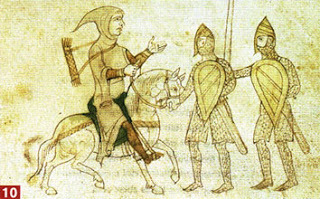
1192 Richard I the Lion hearted was captured near Vienna by Leopold V, Duke of Austria who accused Richard of arranging the murder of his cousin Conrad of Montferrat.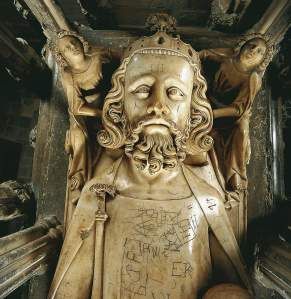
1327 Edward II of England was murdered by order of his wife Isabella, daughter of King Philip IV of France.

19 BC Virgil, the great Roman poet, died in Rome at age 50.

1192 Richard I the Lion hearted was captured near Vienna by Leopold V, Duke of Austria who accused Richard of arranging the murder of his cousin Conrad of Montferrat.

1327 Edward II of England was murdered by order of his wife Isabella, daughter of King Philip IV of France.
Published on September 21, 2015 00:00
September 20, 2015
Scribbler Tales Volume Two Snippet - The Portrait by Mary Ann Bernal

The Portrait
Holliday stood before the portrait of her ancestor, the formidable matriarch who had ruled her family with an iron hand, taking no prisoners whenever anyone had dared to voice their dissension. The artist had captured the very essence of the woman, her cold eyes penetrating the soul of any who stood before her, anyone except Holliday.
She was not like the rest of them. Holliday not only looked like Olivia, she also exhibited her forbearer’s traits. Perhaps, a reincarnation, if there was such a thing. And Holliday was feared just as Olivia had been feared, a woman without scruples, an embodiment of pure evil.
The family fortune had been squandered over the years by errant male heirs, gambling and whoring away their lives after having sired the coveted son. Holliday was the end of a line, the sole survivor of a dynasty that had ruled the bayou for centuries. She had inherited the house, a mansion by today’s standards, the remnants of a glorious estate from a bygone era.
eBook Paperback Audio
Published on September 20, 2015 02:00
Some fun facts that I bet you didn't know about author Brenda Sparks

What you don't know about Brenda:
She is a lefty.

Is totally addicted to coffee.

Can't stand sea food.

Her favorite restaurant is the Melting Pot.

She and her friends played teacher when they were little girls and they all ended up working in a school system as either teachers or librarians.

Her favorite holiday is Halloween.

She's engaged to fellow author, DW Adler. (He's a fantastic writer and wonderful man.)

Her favorite colors are black and purple.

She began university as a music major.

She loves horror movies, especially ones about vampires, but then you could probably guess that based on her books.

Brenda loves to hear from readers. Please contact her site

Purchase LinksAmazonAll RomanceWild Rose PressKoboiTunesBarnes and Noble
Published on September 20, 2015 02:00
History Trivia - The Battle of Châlons - Attila the Hun defeated
September 20
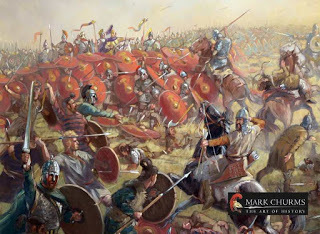
451 The Battle of Châlons took place in North Eastern France. Flavius Aetius's victory over Attila the Hun in a day of combat is considered to be the largest battle in the ancient world.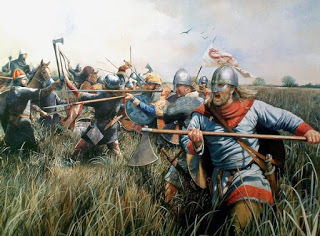
1066 The Battle of Fulford: King Harald III of Norway (Harald Hardrada) and Tostig Gowinson, his English allay, defeated Edwin of Mercia and Morcar of Northumbria.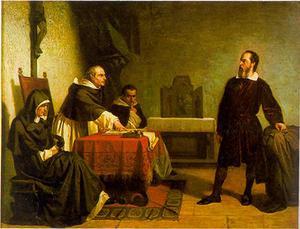
1633 Galileo Galilei was tried before the Congregation for the Doctrine of the Faith for teaching that the Earth orbits the Sun and was found "vehemently suspect of heresy", forced to recant, and spent the rest of his life under house arrest.

451 The Battle of Châlons took place in North Eastern France. Flavius Aetius's victory over Attila the Hun in a day of combat is considered to be the largest battle in the ancient world.

1066 The Battle of Fulford: King Harald III of Norway (Harald Hardrada) and Tostig Gowinson, his English allay, defeated Edwin of Mercia and Morcar of Northumbria.

1633 Galileo Galilei was tried before the Congregation for the Doctrine of the Faith for teaching that the Earth orbits the Sun and was found "vehemently suspect of heresy", forced to recant, and spent the rest of his life under house arrest.
Published on September 20, 2015 00:00
September 19, 2015
The history of the hamburger
History Extra
 Actresses Dorothy Sebastian and Joan Crawford enjoy some hamburgers on a Los Angeles beach, c1925-35. (Credit: Getty)
Actresses Dorothy Sebastian and Joan Crawford enjoy some hamburgers on a Los Angeles beach, c1925-35. (Credit: Getty)
Why are they called hamburgers?
From the grilled, minced beef patties that originated in the German city of Hamburg and that were introduced to America in the 19th century by German sailors or immigrants.
Where was the hamburger first commercially served in America?
Predictably, many places are keen to claim this honour. The argument is complicated by disputes over what actually constitutes a hamburger. For example, does it have to be in a bun?
New Haven, Connecticut enjoys the support of the Library of Congress in its claim that Louis Lassen of local restaurant Louis’ Lunch first served chopped, pressed beef between two slices of bread in 1900. On the other hand, Athens, Texas argues that Fletcher Davis had been serving them at his food outlet there since the 1880s and popularised them at the 1904 World Trade Fair at St Louis.
How did the Wimpy restaurant chain get its name?
It was named after J Wellington Wimpy, the impecunious hamburger-munching character of Elzie Crisler Segar’s Popeye cartoons. His catchphrase: “I’d gladly pay you Tuesday for a hamburger today” has now become an oft-quoted example of financial irresponsibility.
Where was the first McDonald’s?
Mac and Dick McDonald converted their existing restaurant in San Bernardino, California into a streamlined burger joint in December 1948. The first franchised McDonald’s restaurant was opened in Des Plaines, Illinois by future corporation head and owner of the San Diego Padres baseball team, Ray Kroc, in April 1955.
Where was Britain’s first McDonald’s?
The beach-head of the McDonald’s invasion of Britain was established on Powis Street in Woolwich, London, and was formally opened on 13 November 1974. Woolwich was apparently chosen as the location for the first outlet as it was considered to be demographically typical.
By that time outlets had already been established in 16 countries and Britain’s first McDonald’s was in fact the 3,000th to open worldwide. Photographs suggest that the original Woolwich staff were considerably older and more experienced than the typically youthful employees of today’s McDonald’s restaurants.
Julian Humphrys is Development Officer for the Battlefields Trust. He is the author of Clash of Arms: Twelve English Battles (English Heritage, 2007) and a regular contributor to BBC History Magazine.
 Actresses Dorothy Sebastian and Joan Crawford enjoy some hamburgers on a Los Angeles beach, c1925-35. (Credit: Getty)
Actresses Dorothy Sebastian and Joan Crawford enjoy some hamburgers on a Los Angeles beach, c1925-35. (Credit: Getty)Why are they called hamburgers?
From the grilled, minced beef patties that originated in the German city of Hamburg and that were introduced to America in the 19th century by German sailors or immigrants.
Where was the hamburger first commercially served in America?
Predictably, many places are keen to claim this honour. The argument is complicated by disputes over what actually constitutes a hamburger. For example, does it have to be in a bun?
New Haven, Connecticut enjoys the support of the Library of Congress in its claim that Louis Lassen of local restaurant Louis’ Lunch first served chopped, pressed beef between two slices of bread in 1900. On the other hand, Athens, Texas argues that Fletcher Davis had been serving them at his food outlet there since the 1880s and popularised them at the 1904 World Trade Fair at St Louis.
How did the Wimpy restaurant chain get its name?
It was named after J Wellington Wimpy, the impecunious hamburger-munching character of Elzie Crisler Segar’s Popeye cartoons. His catchphrase: “I’d gladly pay you Tuesday for a hamburger today” has now become an oft-quoted example of financial irresponsibility.
Where was the first McDonald’s?
Mac and Dick McDonald converted their existing restaurant in San Bernardino, California into a streamlined burger joint in December 1948. The first franchised McDonald’s restaurant was opened in Des Plaines, Illinois by future corporation head and owner of the San Diego Padres baseball team, Ray Kroc, in April 1955.
Where was Britain’s first McDonald’s?
The beach-head of the McDonald’s invasion of Britain was established on Powis Street in Woolwich, London, and was formally opened on 13 November 1974. Woolwich was apparently chosen as the location for the first outlet as it was considered to be demographically typical.
By that time outlets had already been established in 16 countries and Britain’s first McDonald’s was in fact the 3,000th to open worldwide. Photographs suggest that the original Woolwich staff were considerably older and more experienced than the typically youthful employees of today’s McDonald’s restaurants.
Julian Humphrys is Development Officer for the Battlefields Trust. He is the author of Clash of Arms: Twelve English Battles (English Heritage, 2007) and a regular contributor to BBC History Magazine.
Published on September 19, 2015 02:00
History Trivia - Battle of Poitiers - Edward, the Black Prince, defeats the French
Sept 19

335 Dalmatius was raised to the rank of Caesar by his uncle Constantine I.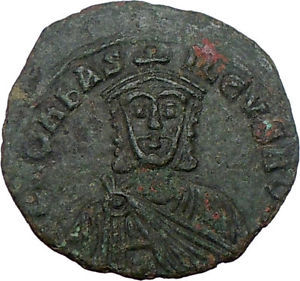
912 Emperor Leo VI was born. Known as the Wise or the Philosopher, Emperor Leo VI of Byzantium issued imperial laws in Greek that became the legal code of the Empire.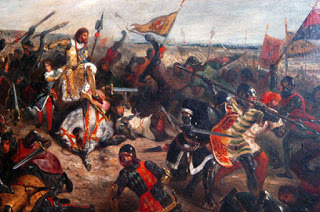
1356 Hundred Years' War: Battle of Poitiers: an English army under the command of Edward, the Black Prince defeated a French army and captured the French king, John II.

335 Dalmatius was raised to the rank of Caesar by his uncle Constantine I.

912 Emperor Leo VI was born. Known as the Wise or the Philosopher, Emperor Leo VI of Byzantium issued imperial laws in Greek that became the legal code of the Empire.

1356 Hundred Years' War: Battle of Poitiers: an English army under the command of Edward, the Black Prince defeated a French army and captured the French king, John II.
Published on September 19, 2015 01:00
September 18, 2015
Author K. Meador : La Princesa y el Dragon Contest Nominee @PrincessA...
Author K. Meador : La Princesa y el Dragon Contest Nominee @PrincessA...: The Spanish edition of Princesa Alexia and the Dragon has been chosen to be a part of Amazon’s 2 nd Literary Contest for the Spanish Lan...

The Spanish edition of Princesa Alexia and the Dragon has been chosen to be a part of Amazon’s 2nd Literary Contest for the Spanish Language (Indie Authors). Winner will be chosen on October 15, 2015. La Princesa Alexia y el Dragon por K. Meador Sigue a La Princesa Alexia y a su perra, Zoey, mientras se embarcan en una misión para enfrentarse al dragón de aliento de fuego. Ella espera hacer lo que los soldados del Rey no pudieron: capturar al dragón para que otra Celebración de la Huerta de la Manzana Abundante no sea atacada y sus tierras abrasadas. Cuando La Princesa Alexia se enfrenta a su adversario, está aterrada, pero sus miedos disminuyen una vez que ella y Titus el dragón empiezan a hablar. ¿Podrá ella convencer a Titus de parar de atormentar al reino? ¿Podrá el festival ser celebrado sin miedo a la destrucción?Any support by sharing on social media will be appreciated. Please use in your posts #AutopublicaConKindle
Amazon.es
Audible
Amazon Kindle

Princess Alexia and the Dragon by K. MeadorFollow Princess Alexia as she and her brave dog, Zoey, embark on a mission to confront a fire-breathing dragon. She hopes to do what her father’s soldiers could not, capture the dragon so another Ample Apple Orchard celebration would not be attacked and the land set ablaze. When Princess Alexia faces her adversary, she is frightened, but her fears abate once she and Titus, the dragon, begin talking. Can she convince Titus to stop plaguing her father’s kingdom, and will the festival be celebrated without fear of destruction?Any support by sharing on social media will be appreciated. Please use in your posts #AutopublicaConKindle
Amazon.com
Audible

The Spanish edition of Princesa Alexia and the Dragon has been chosen to be a part of Amazon’s 2nd Literary Contest for the Spanish Language (Indie Authors). Winner will be chosen on October 15, 2015. La Princesa Alexia y el Dragon por K. Meador Sigue a La Princesa Alexia y a su perra, Zoey, mientras se embarcan en una misión para enfrentarse al dragón de aliento de fuego. Ella espera hacer lo que los soldados del Rey no pudieron: capturar al dragón para que otra Celebración de la Huerta de la Manzana Abundante no sea atacada y sus tierras abrasadas. Cuando La Princesa Alexia se enfrenta a su adversario, está aterrada, pero sus miedos disminuyen una vez que ella y Titus el dragón empiezan a hablar. ¿Podrá ella convencer a Titus de parar de atormentar al reino? ¿Podrá el festival ser celebrado sin miedo a la destrucción?Any support by sharing on social media will be appreciated. Please use in your posts #AutopublicaConKindle
Amazon.es
Audible
Amazon Kindle

Princess Alexia and the Dragon by K. MeadorFollow Princess Alexia as she and her brave dog, Zoey, embark on a mission to confront a fire-breathing dragon. She hopes to do what her father’s soldiers could not, capture the dragon so another Ample Apple Orchard celebration would not be attacked and the land set ablaze. When Princess Alexia faces her adversary, she is frightened, but her fears abate once she and Titus, the dragon, begin talking. Can she convince Titus to stop plaguing her father’s kingdom, and will the festival be celebrated without fear of destruction?Any support by sharing on social media will be appreciated. Please use in your posts #AutopublicaConKindle
Amazon.com
Audible
Published on September 18, 2015 12:12
U.S. National POW/MIA Recognition Day

There are 1,741 American personnel listed by the Defense Department's POW/MIA Office as missing and unaccounted for from the Vietnam War, as of April 2009. The number of United States personnel accounted for since the end of the Vietnam War in 1975 is 841. About 90 percent of the 1,741 people still missing were lost in Vietnam or areas of Laos and Cambodia under Vietnam's wartime control, according to the National League of Families website (cited in the United States Army website).
The United States Congress passed a resolution authorizing National POW/MIA Recognition Day to be observed on July 18, 1979. It was observed on the same date in 1980 and was held on July 17 in 1981 and 1982. It was then observed on April 9 in 1983 and July 20 in 1984. The event was observed on July 19 in 1985, and then from 1986 onwards the date moved to the third Friday of September. The United States president each year proclaims National POW/MIA Recognition Day. Many states in the USA also proclaim POW/MIA Recognition Day together with the national effort.
Learn More

Published on September 18, 2015 06:34



